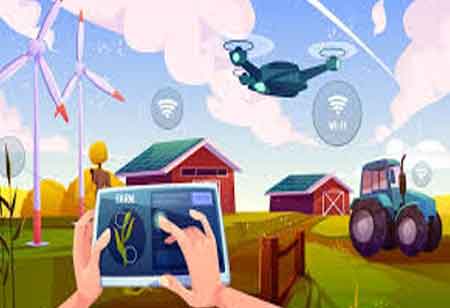Thank you for Subscribing to Agri Business Review Weekly Brief
Revolutionizing Agriculture: The Future of Farming with Advanced Soil Testing Technology
Advanced soil testing technology is revolutionizing agriculture by optimizing productivity, sustainability, and environmental stewardship through precise, data-driven insights. This innovation enables farmers to make informed decisions, enhancing crop yields and promoting sustainable farming practic

By
Agri Business Review | Friday, October 24, 2025
Stay ahead of the industry with exclusive feature stories on the top companies, expert insights and the latest news delivered straight to your inbox. Subscribe today.
Fremont, CA: As the world continues to add more people to its population, the need to produce food to feed them never stops growing. This raises many challenges for conventional agriculture. The way forward is embracing cutting-edge technology in farming, particularly advanced soil testing technology, which leads the way in transformation. Through such innovation, agricultural productivity, sustainability, and environmental stewardship can be optimized as the face of farming is redesigned to be more innovative, precise, and incredibly efficient.
The Important Role of Soil Health
Agriculture has always been connected to soil quality. Traditional farming causes soil degradation, nutrient depletion, and erosion, making it unsuitable for long-term sustainability. Advanced soil testing technology fills the gap between conventional agricultural knowledge and modern science and solves the abovementioned problems.
Soil Testing Evolution
The simple analyses of nutrient content and pH levels have marked the history of soil testing. Today, advanced technology uses sophisticated sensors, data analytics, and artificial intelligence to deliver in-depth insights into the composition of the soil, levels of nutrients, balance of pH, and activity of microbes.
Unleashing the Power of Precision Agriculture
Precision agriculture, enabled by modern soil testing technology, gives farmers the opportunity to have a customized nutrient management plan unique to their land's characteristics. This targeted approach maximizes resource use, reduces waste, and minimizes the environmental footprint of farming operations, improving crop yields and quality.
The Data-Driven Revolution
The core of advanced soil testing technology lies in the data. Field sensors collect real-time information about soil conditions, moisture levels, and nutrient concentrations. The data is then analyzed to produce actionable insights, providing farmers instant recommendations on fertilizers, planting times, and potential disease risks. This approach minimizes losses and creates a sustainable farming model.
Overcoming Challenges and Gaining Adoption
A significant barrier is the initial cost of implementing advanced soil testing technology. Government and private sector stakeholders and research institutions can lend support through subsidies, training, and technical assistance to speed up its adoption.
Environmental Sustainability
In the face of climate change, sustainable agriculture is vital. Superior soil testing technology allows advanced regenerative farming practices- cover cropping, crop rotation and reduced tillage, where the rejuvenation of soils leads to carbon sequestration, reduced water, and runoff of agrochemicals.
This soil testing technology also prevents nutrient runoff in water, safeguarding aquatic ecosystems and ensuring a cleaner supply of fresh water.
The future agricultural era promises to transform farming with new advanced soil testing technology. Despite these costs and the need for training, collaborative efforts by governments, the private sector, and institutions in agriculture will determine how widespread its use becomes.
Agriculture is at a crossroads between a growing global population and climate change. Advanced soil testing technology offers an avenue to a sustainable and productive future. It is a wake-up call for each stakeholder to embrace innovation and harness data that may ensure food security without compromising the health of our planet. The soil under our feet holds the key to a bountiful tomorrow.





